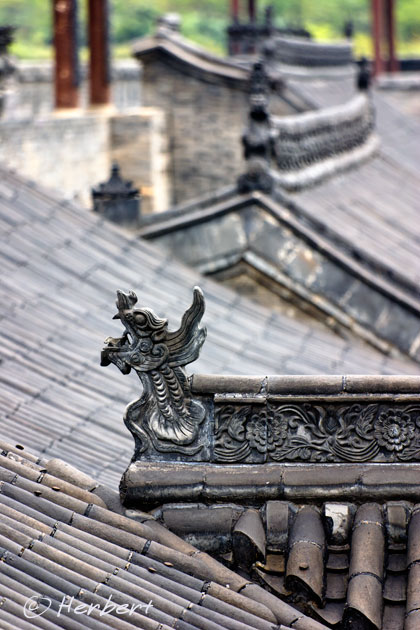
Location: Pingyao, Shanxi, China (37� 12' 5? N, 112� 9' 16? E)
Date: 10 October 2008; 2.50pm
Camera: Canon 400D with Canon 70-200 f/4 L IS Lens
There are still quite a few places in China that maintain their heritage architecture, though this is dwindling by the day. Many places had been demolished to make room for modern developments; the most notorious example of this were the wholesale destructions of the hutongs of Beijing. Many of the remaining ancient architecture throughout China managed to escape the same fate by turning themselves into tourists attractions. They draw tourists, both Chinese and foreigners and their attractiveness as a tourist destination saves them from the hammer of destruction. However these structures faced a different onslaught- commercial developments and exploitations. More and more of the old buildings and houses in places such as Lijiang Old Town had been turned into tourist shops selling all sorts of stuff, instead of being preserved as domestic dwellings, in the process losing its �soul�. I guess this is better than losing them totally.
Pingyao in Shanxi is likely to follow then path of towns such as Lijiang and Fonghuang soon. Pingyao was a financial center during the Qing Dynasty and still retains its city layout from the Ming and Qing dynasty. Within its renowned well-preserved ancient city walls are close to 4,000 preserved Ming and Qing-style residences. The streets and storefronts currently still largely retain their historical appearance. Undoubtedly the winds of tourism exploitation will soon transform this quaint and friendly little town into another must-see on the tourist map, changing the character of the building and its population in the process. This may be the only way to ensure the survival of such ancient towns in China.